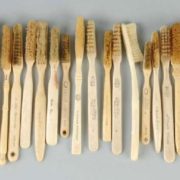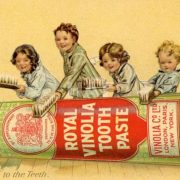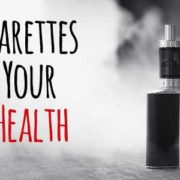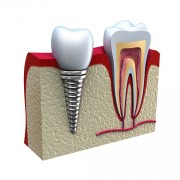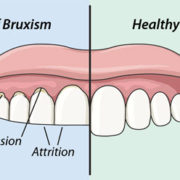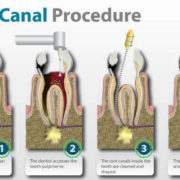What is denture adhesive and do I need it?
Dentures. They really get a bad rap, don’t they? The truth is that dentures are a fantastic way to improve the look of a smile that has lost a few team players, and they don’t have to leave you speaking with an awkward, toothy lisp or whistle.
Dentures are custom made to completely create a set of teeth or partially fill in missing spaces. They are typically made from resin or porcelain after impressions are taken of your mouth and sent to a laboratory.
In order for dentures to stay in place and appear as natural as possible, they technically only need to have been made correctly. However, over time the fit of the dentures may alter due to natural changes in the mouth. For example, if you have teeth removed and are then immediately fitted for dentures, the healing process and recession of the gums might result in a changed mouth shape no longer completely fitted to the dentures. If this is the case, you might need to look into an adhesive. Even for those whose dentures are fitted correctly and do not technically need an adhesive, the extra confidence that their teeth will stay in place makes its application worthwhile.
Why is denture adhesive better?
Adhesives can be pastes, powders, and pads, and all need to be used with care and caution. Using too much adhesive can change your bite and result in jaw problems that can hurt both your mouth and the dentures you’ve paid for. Some are more easy to work with than others. For example, adhesive pads need to be cut to perfectly fit your dentures while powders are applied simply by mixing with water. Though most manufacturers have eliminated it from their products, watch out for zinc in your adhesives as it has resulted in nerve damage in hands and feet when over-ingested.
In general, be careful not to overuse adhesive in an attempt to ensure day-long hold. This can actually result in improper function of the material. Again, if you get your dentures from an experienced dental provider and your mouth shape does not drastically change, your dentures should stay in place without the help of adhesive. If you do not think this is the case, consult your dentist about what time of adhesive would be the best for you.
Main Takeaways:
- Good dentures don’t need adhesive to stay on
- Adhesives should be used sparingly
- Watch for harmful ingredients
- Consult your dentist if you think you need adhesive (a larger problem with the fit might be uncovered)



